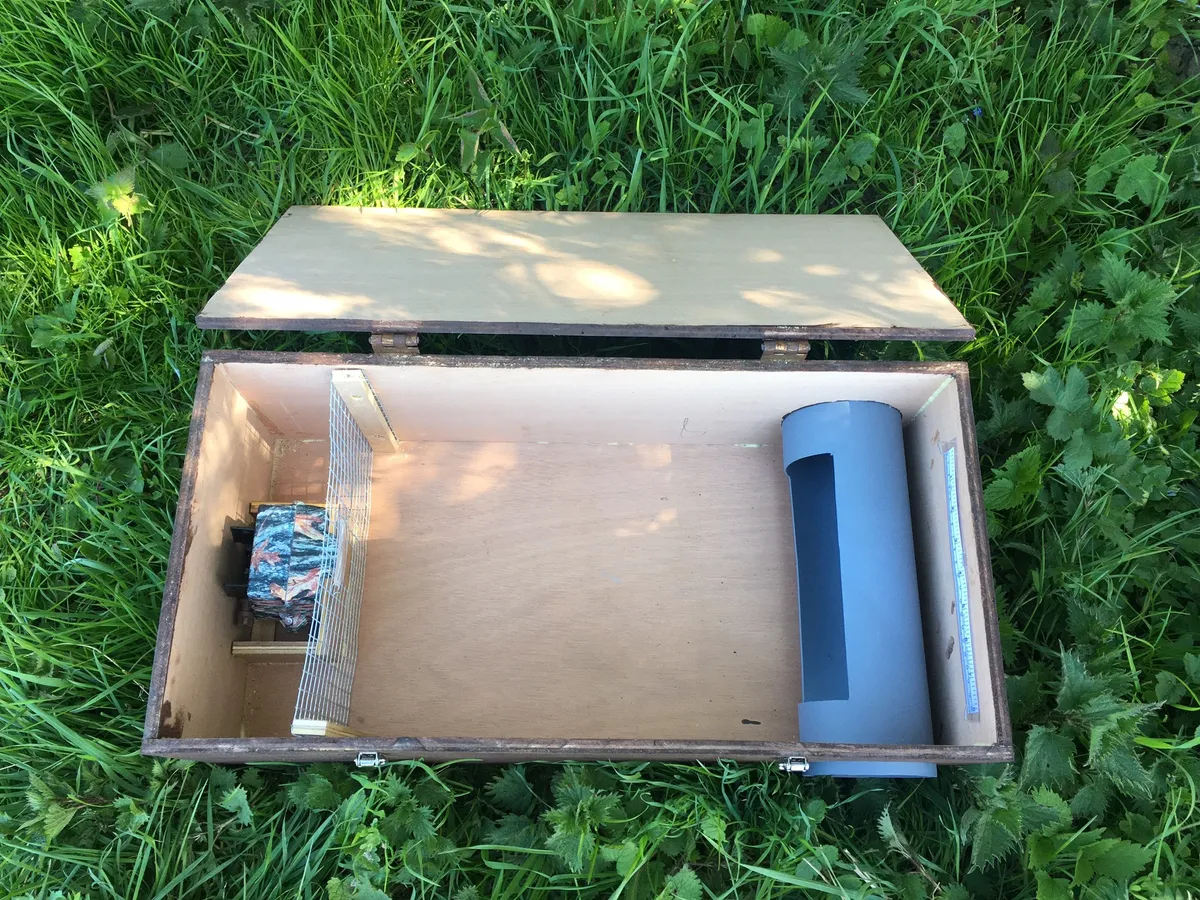Mustelids – the family of mammals that includes stoats, weasels, ferrets, and otters among others – are notoriously difficult to spot and survey. Although they are thought to be widespread in the UK, they are small and speedy, meaning that even camera trapping, the tried-and-tested method for hard-to-spot species, doesn’t have much success. They also don’t leave many easily visible tracks or field signs.
In an effort to combat the resulting lack of data on these species, the Vincent Wildlife Trust is currently trialling a new type of camera set up, named ‘Mostelas’.
This new methodology aims to exploit the natural curiosity of these animals, by providing them with a box to explore. The camera is positioned facing the wooden box, which has an open pipe running through. Boxes have been placed in various likely mustelid habitats, including field margins, hedgerows and the edges of woodlands. The aim is that the small mammals will be drawn into the box through the pipe and will spend time investigating. This should slow them down enough to be recorded and identified.

So far, this is exactly what has happened. Weasels seem to especially be enjoying the boxes and the project has amassed lots of footage of these energetic creatures running in, out, and around them, with pairs even coming inside to play. The cameras have also caught some incredible footage of polecats, generally very elusive and rare animals, as well as many other small mammals such as mice, voles and shrews.
‘Small mustelids, such as weasels and stoats, are notoriously tricky to study,’ says Lizzie Croose, senior carnivore conservation officer at the Vincent Wildlife Trust. ‘However, using methods like the Mostela, we’re able to gain valuable insights into these species’ distribution and occupancy, as well as enjoy some entertaining camera trap footage!’
The trial then is seemingly proving what it set out to determine – that Mostelas are an effective way to survey small mustelids. Large amounts of data have already been captured, and if you are interested in citizen science you can even help in decoding it, contributing directly to mustelid records, and adding to what we know about these intriguing animals.
Given that it is suspected that small mustelids are in decline over large parts of Europe, efforts like this to monitor them and add to datasets are crucial. There is a great need to collect evidence to support this potential decline, and thereby better understand their conservation status and the threats they face.

The most recent trial ran from May-September this year and placed boxes 20 different sites within the same estate. Given the promising results it is hoped that the project will eventually be scaled up, enabling large-scale monitoring and data collection. The next step for now is to sort through all the excellent footage captured so far with the help of MammalWeb and volunteers, classifying which species have been seen.
Main image: A rare image of a least weasel (Mustela nivalis) in the Midlands. These animals are very elusive and hard to capture on camera. © MikeLane45/Getty images
